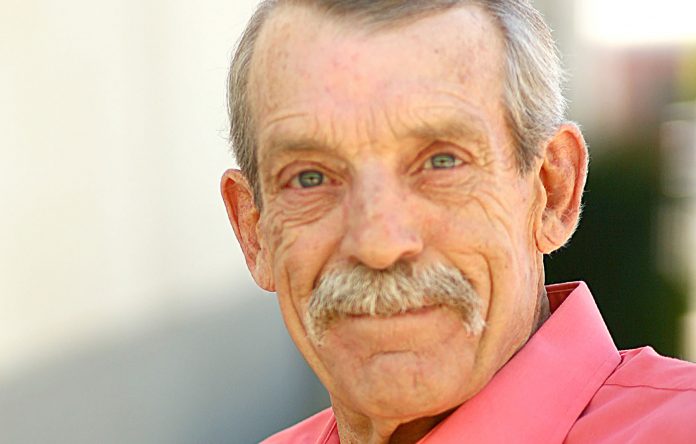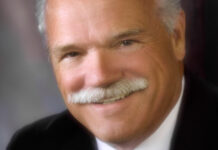What is humor? What makes us smile, what tickles our funny bones? Humor is a very serious subject for some, mostly those involved in therapy and counseling where humor has been found to be an indicator of one’s emotional and mental state. But for most of us humor is what we seek, consciously or unconsciously, as escape from the mundanities of life, as small detours in times when either stress or boredom beg for respite.
In fact, humor has been separated into five basic categories: Topical, Anecdotal, Parody, Traditional and the One Liner. As a member of the Television Generation, I have laughed at the humor represented by all five categories; some of you will no doubt recognize some of the names of those who brought laughter into our homes and lives and some are people in my life who consistently made me laugh over the years.
As the television set found its way into more and more homes, those who were instrumental in both its scientific and cultural development were goaled with providing the public with reports on weather, crops marketing and government actions, what they got were game shows, soap operas, variety shows and product advertisements and only 15 minutes of news daily. It was the earlier variety shows and then later the late-night talk shows that brought laughter to our living rooms, and those most responsible for that laughter in the late 1950s through the mid-1970s were Jewish comedians.
This followed from the influence of Yiddish translated to English by Vaudeville performers from Europe, and quite often this humor was born of hardship, like this one from Manhattan’s Lower East Side in the 1920s:
Lady shopper to street fruit vendor: “How much for the grapefruit?”
Vendor: “Two for a nickel.”
Lady: “How much for one?”
Vendor: “Three cents.”
Lady: “I’ll take the other one.”
Or like the once well-known story of the man taking his son along for the first time on a business trip and looking out the coach window of the train to the platform where the whole family is gathered to wish him off when the father tells the boy to “Throw Mama from the train a kiss.”
Jerry Lewis and Dean Martin were once a famous comedy team. Lewis was Jewish and when something would go wrong in a comedy sketch he was known to utter “Up the street the soldiers are marching down”; this typical of the grammatical structure one gets with Yiddish-infused English.
And, as mentioned before, many of the early television comedians were Jewish: Jack Benny, George Burns, Milton Berle, Jackie Mason, Allen King and scores of others who worked small clubs in the East and resorts in the Catskill Mountains of upper New York state, The Borscht Belt. It was in these venues comedians mastered the One-Liner; many people know “Take my wife, please,” the Methuselah of one-liners from Henny Youngman; later we knew Rodney Dangerfield’s “My wife and I were happy for 20 years . . . then we met.”
For most of us, our earliest introduction to humor comes in the form of the Knock-Knock joke; silly most of them, but to the young, silly is funny. My favorite knock-knock I heard for the first time only about six months ago: “Knock, knock.” “Who’s there?” “Interrupting bird.” “Interrupting bir. . .” “Gaaawwwk!!” Got a granddaughter who thought that was very funny and I’m sure has passed it along. Another favorite humor theme for the younger set is “Why did the chicken cross the road” jokes, of which there are as many answers as there are imaginations.
Other humor is funny, but not silly. There are times when we need a dark humor just to overcome the dark times and so we resort to what is known as Graveyard Humor; a light look at a serious situation. Examples of this type of humor go back as far as the founding of the country: in meeting of the Continental Congress it was remarked that the endeavor to separate from the English Crown would require all members participation, “we must all hang together.” Whereupon Benjamin Franklin dryly responded, “Or most assuredly we will all hang separately.”
George Gobel on Johnny Carson’s “The Tonight Show” once lamented that his uncle was always annoyed that he never received any respect for his wartime duty, and when Carson asked, “What did your uncle do in the war?” Gobel replied, “He was a look-out at Pearl Harbor.” That’s funny even though thousands lost their lives that day; I have never heard such a joke about Sept. 11, 2001. A lesser cousin to graveyard humor is the edgy, almost politically incorrect humor found in older sketch comedy routines; and example goes something like this:
“Tell me, Mr. Bones, how do I keep my dog from biting me on Monday?” “The answer is simple, Mr. Tambo, you shoot the dog on Sunday!” A version of this joke appeared in the musical “White Christmas.”
But for modern comedians, and audiences, the telling of jokes doesn’t work near as well as the anecdotal humorous story, the telling of personal events in one’s life. Often, or always, in such re-tellings expand those aspects, which strikes a humorous tone. Such humor is found in the writings of Mark Twain, James Thurber and other early American writers; today all stand-up comedians, TV and film/video writers and cartoonists rely almost entirely upon this type of humor.
In my own life, I have written in this publication and in a couple of short stories for writing classes over the years about the time, as a bag boy at Safeway here in town, I ended up inside an upside-down shopping cart; painful for me but funny for others.
I said I would mention some people in my life who over the years made me laugh as joke tellers, not just their material but their delivery being of equal standing. Well, I’m out of space so let me just say, “Thanks for memories, Jimmy Jones and Stephen Bruce Scettrini.”
Take care. Peace.













